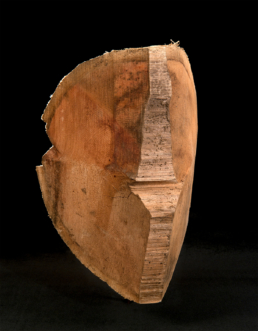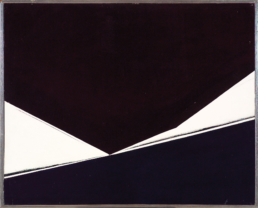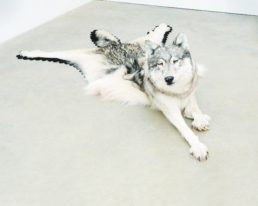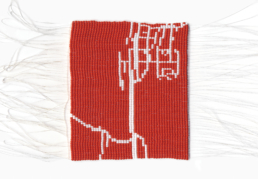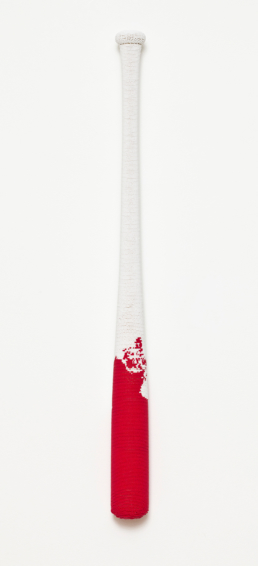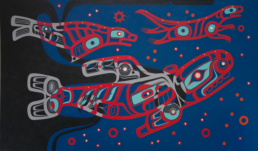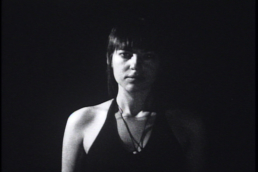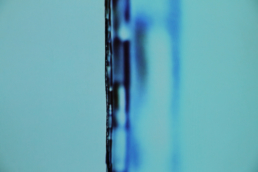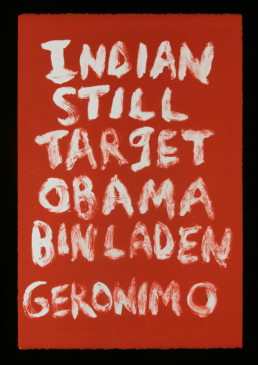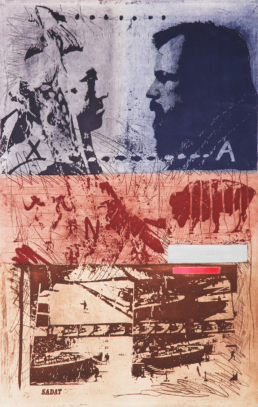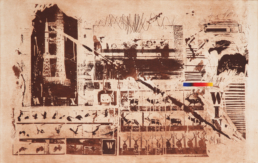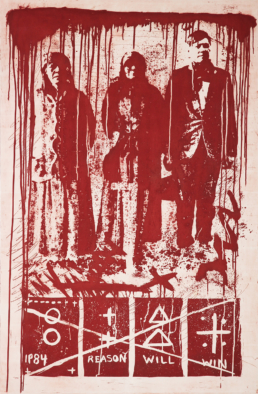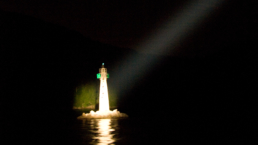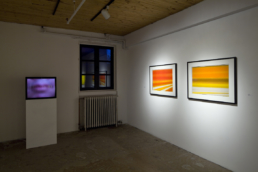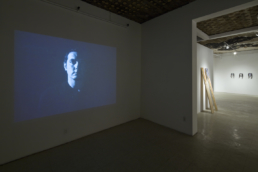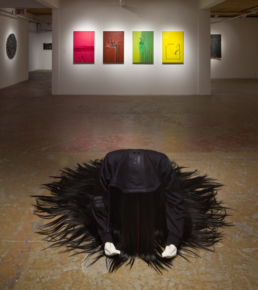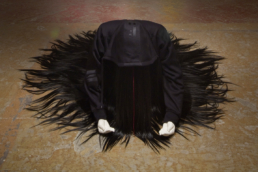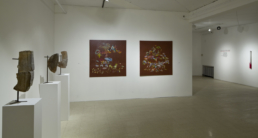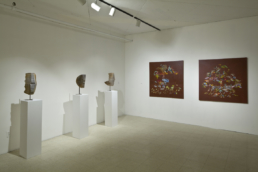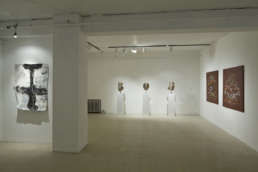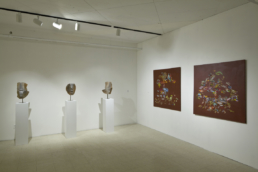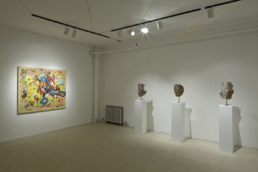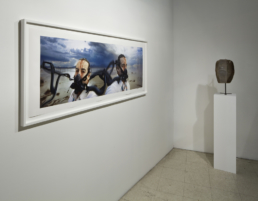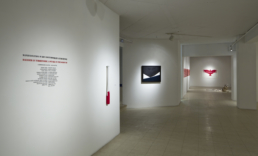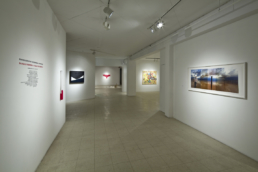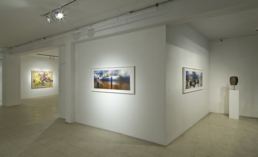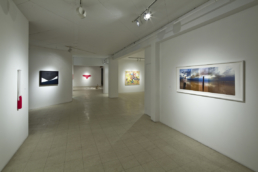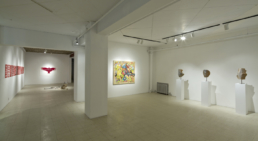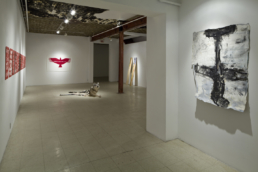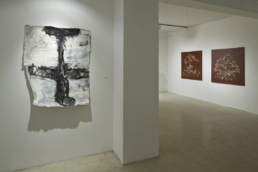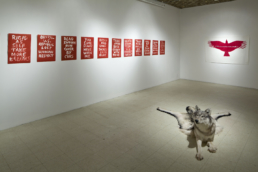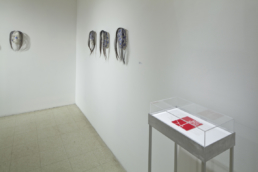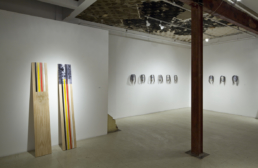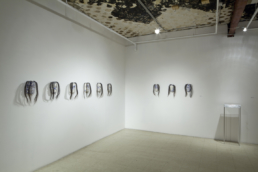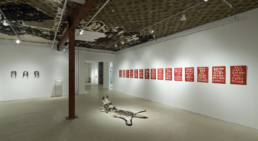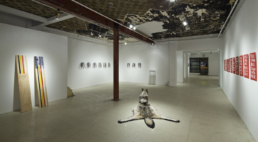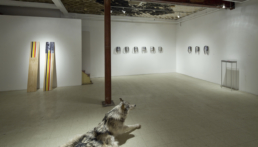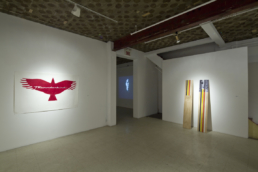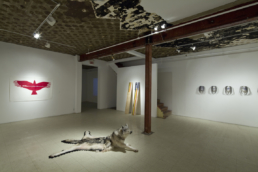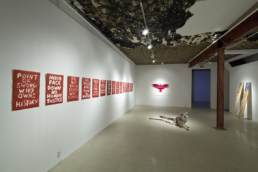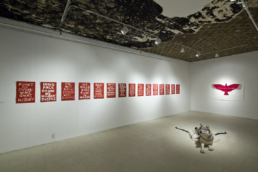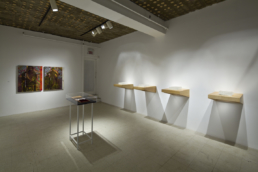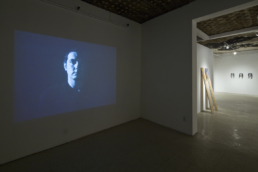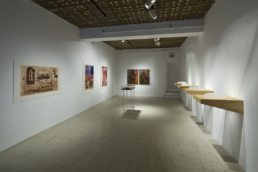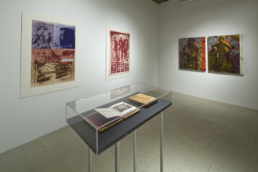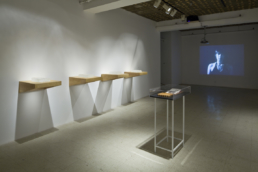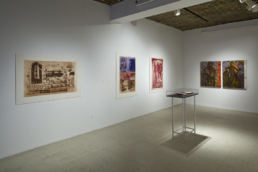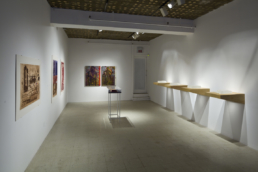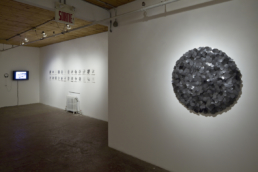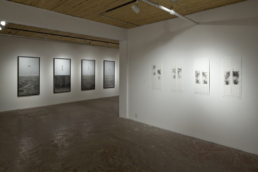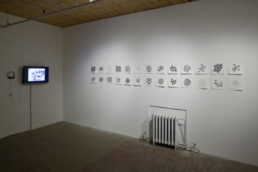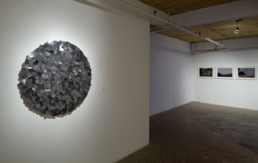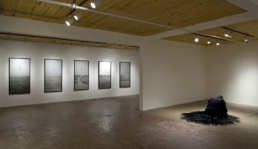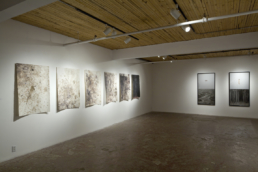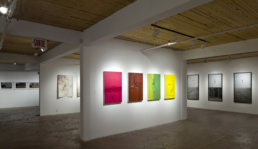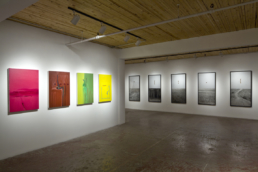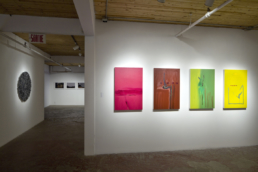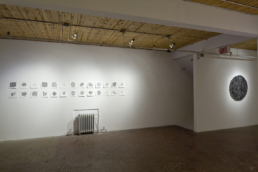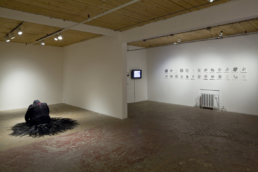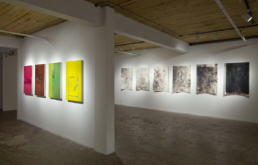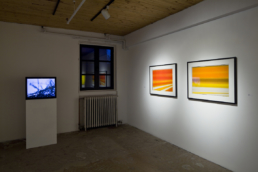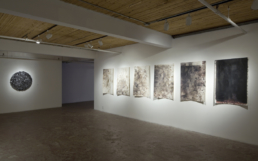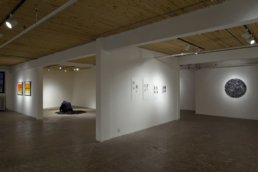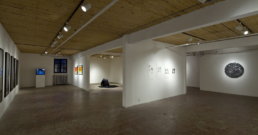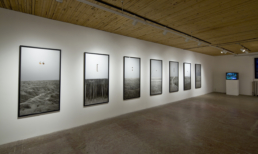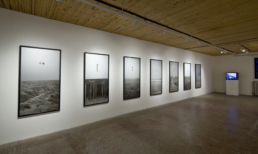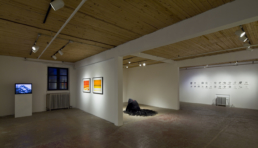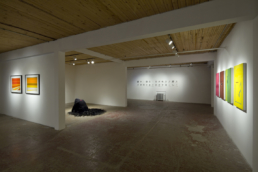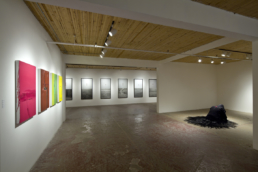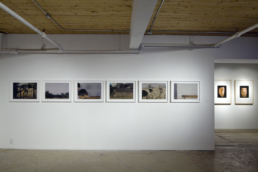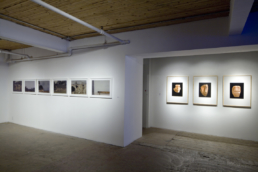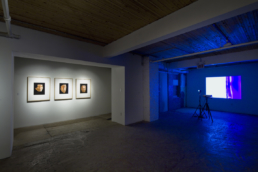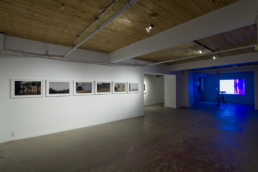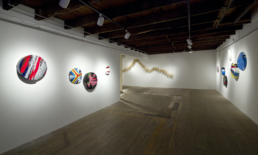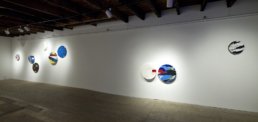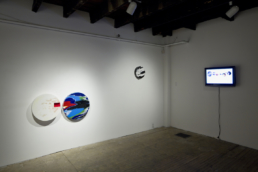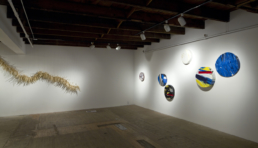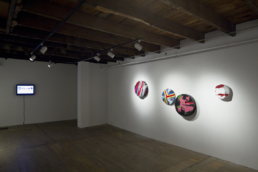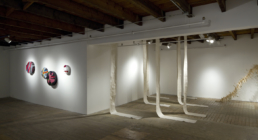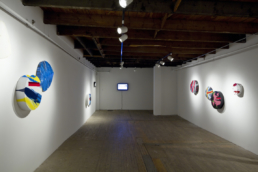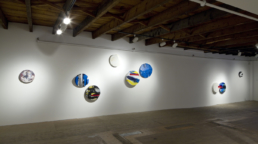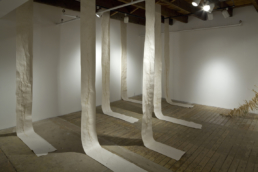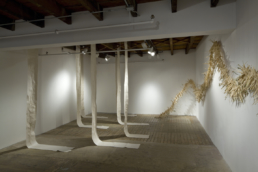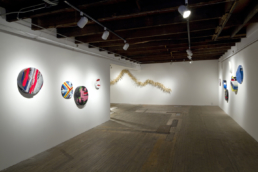January 14 – February 25, 2012
Opening reception: Saturday, January 14, from 3 to 5 p.m.
Contemporary Native Art Biennial (BACA) – 1st edition
A Stake in the Ground
Guest curator : Nadia Myre
Sonny Assu, Jason Baerg, Carl Beam, Rebecca Belmore, Kevin Lee Burton, Hannah Claus, Bonnie Devine, Raymond Dupuis, Edgar Heap of Birds, Vanessa Dion Fletcher, Nicholas Galanin, Greg Hill, Robert Houle, Maria Hupfield, Rita Letendre, Glenna Matoush, Alan Michelson, Nadia Myre, Marianne Nicolson, Michael Patten, Arthur Renwick, Sonia Robertson, Greg Staats, Tania Willard, Will Wilson
Text by Nadia Myre
Many Aboriginal artists have an anxious relationship with their culture. In order to signify in the contemporary art world they had to learn to speak the dominant language, know its history and ways. It is extremely difficult to be competent in both systems. This sounds like a choice, when in fact it is a negotiation with the assimilationist project. Some artists are very clever about opening up a space between the cultures where they mumble new selves into shape.1
Learning to Speak
Because of my language wound, I have always preferred wordless gestures to speech. I carry with me the feeling that I need to actively listen; to read between the lines; that people don’t say what they mean, that I won’t say what I mean. I have to be very careful about what I say. Language is power, and words shape thoughts that manifest in the world. Many of the works I have chosen for A Stake in the Ground / Baliser le territoire are concerned with the power of language and land. As an Indigenous person I am deeply aware that the two are intertwined: to talk about language in a colonial context is also to talk about stolen lands. One cannot separate the two, and Aboriginal people are never far from the politics of both.
Language lives in the naming of places, and the memory of those places lives in language – combined, they are the building blocks of culture.2 What happens to a people when they are severed from their language? Severed from their land? How does one speak to the erasure of our historical and collective memories? Or adequately express culture when we have forgotten (or never knew) the words with which to read the landscape? How do we counter what David Garneau calls the “assimilationist project”and move beyond our collective wounds of amnesia, trauma, and psychic loss?
Each of the artists in the exhibition employs a different strategy to stake their ground and push back against assimilation and erasure. What follows are a few examples. In Kevin Lee Burton’s black and white 12 minute video S.E.C.K., four young Aboriginal people speak candidly about their relationship to language. One takes pride in speaking Cree but is mindful of how it costs him. Another regrets that his parents never taught him his heritage language, though they taught hundreds of other people. A third speaks about having lost the words to communicate with her loved ones. The tone of this work is vulnerable and real.
In Greg Staats’ dark string repeat, an installation and video feedback loop, a simple string of wampum, filmed and projected, pulsates on the gallery wall like a beacon. For over a decade, the artist has been steadfastly working against cultural erasure with his “restorative aesthetic.”3 In struggling to learn the Mohawk language, Staats fears the loss of the self, while regaining a Haudenosaunee (Iroquois) world view. The video liminal effect captures Staats’ desperate attempt to recite various parts of the condolence speech in Mohawk while holding a string of wampum. With this performance, Staats reminds us of wampum’s central place in the culture, how it is used as a mnemonic device in ceremonies, and ultimately how it can spiritually uplift indigenous people. In this context, the wampum’s rhythm on the wall is at once the breath of the nation and the individual.
For artist Robert Houle, speaking our heritage languages is an act of resistance against cultural apartheid. In his words, the most politically challenging practice he has undertaken to date is to speak Saulteaux during the act of painting.4 Houle suggests that the “rhythm, grammar, and syntax of the language” not only stimulates his imagination but transforms him, helping him articulate aboriginal experience while deprogramming his colonized being.
Hock E Aye Vi Edgar Heap Of Birds’ serial work Dead Indian Stories, comprised of over 50 red monoprints on rag paper read like news headlines scratched onto the surface with the urgency of a lucid dream – FIND PEOPLE KILL PEOPLE WASHITA RIVER, or INDIAN STILL TARGET OBAMA BIN LADEN GERONIMO. The words, chronicling historic and current stories of violence and murder against Natives, are “written” by rubbing away red ink from the plate. Heap of Birds brings into sharp focus the colonialist world view, where the answer to Indigeneity is erasure.
Arthur Renwick’s series Delegates: Chiefs of the Earth and Sky reminds us how not being proficient in the “official language” has cost us our land and treaty rights. In eleven landscape photographs presented in portrait format and named after delegates invited to sign the Fort Laramie Treaty (1868), Renwick replaces what should be the images of Crazy Horse or Sitting Bull with punctuation marks floating above the horizon. The subjects have been effaced, replaced with coded signifiers that denote pauses, and more significantly, clauses found in imperialist language: a pair of parentheses, a comma and or semicolon engraved in copper and aluminium. Considering these leaders were invited to sign treaties written in words they could not understand (ultimately forcing them to relinquish their land to settlers), Renwick’s work underscores a complicated truth – that behind language lies a power structure and someone always has the upper hand.
Raymond Dupuis’ paintings speak about the artist’s personal relationship to territory and language. Of Malécite heritage, Dupuis has been mapping his trajectory as an urban nomad for over 40 years.5 In his colourful collages the artist incorporates fragmented photographs of personal stomping grounds, lost and forgotten territories, and ancestral memories of trap lines. Over the photographs are a complex interlay of personal signs and symbols he has developed in lieu of a heritage language. His paintings map his cultural displacement: landmarks disappear, the city expands and contracts over decades, replacing tree-lines with malls, and malls with rubble, the artist remains a witness in exile.
Greg Hill’s work evokes cyclical migrations and nomadic movements. His process, however, begins with an introspective examination of his body and the space he occupies in the world. Placing large sheets of rag paper on the studio floor between the printing press and the inking station, Hill demonstrates the repetitive process of printmaking, and in so doing maps a barefoot trajectory of time and movement. Between four walls, Hill delineates his stake as an artist, mapping a new territory; instead of traditional trap lines and rivers, he is marking his path in the transformative space of the studio.
Vanessa Dion Fletcher’s Writing Landscape begins with the question “If the landscape could talk what would it say?” Inverting Hill’s strategy, she is the nomadic printmaker. Dion Fletcher fashions copper printmaking plates into wearable footwear and walks her ancestral territory to feel what the land is saying. Impressing the landscape’s changing terrain in the copper, she then brings her shoes back into the studio to print these topographic “maps.” These inchoate traces reflect her process of renewal with the land while at the same time expressing the difficulty she faces in speaking her ancestral language.6
Marianne Nicolson’s painting Oilspill: the Inevitability of Enbridge, makes her position impeccably clear. In light of historic and recent ecological oil disasters – BP, Exxon, Shell and Chevron – she denounces Enbridge’s Northern Gateway project. She depicts a killer whale, a seal and an otter (three predatory species) banding together in desperate flight from a wave of oil. Embedded in the pigment are coins minted the year Enbridge was incorporated – a subtle comment on the true motivations behind corporate “interest” in the land and First Nations communities.
How do we learn a language we never knew?
A language wound is not two people and their miscommunication… a language wound occurs when silence is mistaken for understanding. And yet language is not the enemy, it is agency, for we remember through it. All of the works selected for A Stake in the Ground / Baliser le territoire denounce the language of “reason” and strive for a holistic sense of ourselves in the world. They also enunciate the struggle to have your soul stirred by things you don’t know, can’t name, or don’t remember – not the voice of reason, not the voice which sees profit in land, but the old voices of old ones.
mantra of footsteps
return to the source
where the tool might be
where memory keeps
safe, on the journey
to and from landmark7
1. David Garneau, “Landscape of Sorrow and other new work,” Invitation (vol. 4, no. 5, April-May 2009): 12-13.
2. Paraphrased from a paper delivered by David Garneau during the panel “Indigenous Cosmopolitanism” at the Aboriginal Curatorial Conference (Toronto, October 16, 2011).
3. Greg Staats’ personal interpretation of the Haudenosaunee restorative aesthetic “comes from the phrase to ‘elevate each other’s minds for at least one day,’ a repetitive phrase within the condolence ceremony.” Email correspondence with the artist, Dec 14, 2011. 4. Paraphrased from a paper delivered by Robert Houle during the panel “25 years after–1992, Part One: Land Spirit Power at the National Gallery” at the Aboriginal Curatorial Conference, Toronto, October, 15 2011.
5. Up until 1989, it was believed there were no Malécites living in Quebec. With only a few hundred tribal members, the Malécite were one of the most “displaced” of the eleven First Nations affiliates in Quebec.
6. Dion Fletcher describes herself as “a unilingual English speaker with Potawatomi and Lenape ancestry … with no direct access to [her] ancestral Aboriginal language.” Vanessa Dion Fletcher, “Writing Landscape,” Vanessa Dion Fletcher: <http://cargocollective.com/dionfletcher/following/posts#1019222/Writing-Landscape>. Retrieved December 15, 2011.
7. Nadia Myre, 2011.


